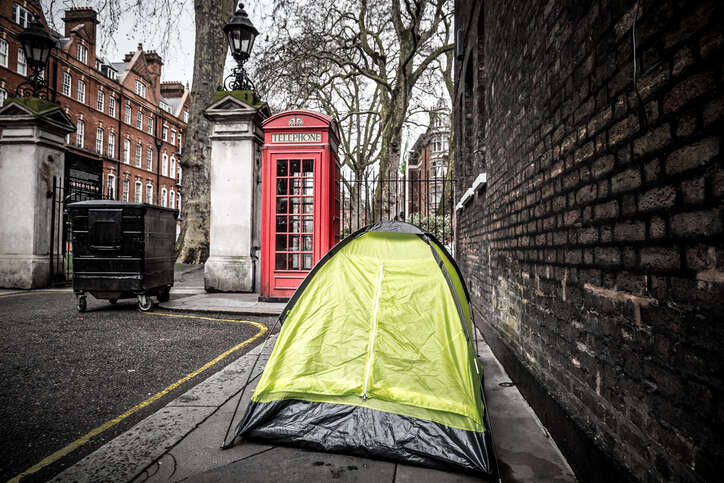
The number of people at risk of homelessness has spiked to the emergency levels seen in the early pandemic, as people struggle to pay their rent amid the cost-of-living crisis and landlords rush to cash in on their properties.

How many people are homeless in the UK?
New data released by the Department for Levelling Up, Housing and Communities shows that, overall, there were 74,230 households in England homeless or at risk of homelessness in Q1 2022, an 11% rise from the previous quarter.
The number of households experiencing homelessness, and due relief duty from the council, in the first quarter of 2022 has increased by 6.7% compared with the fourth quarter of 2021, though is still below the level seen in the same quarter of 2019.
The number of households due prevention duty in the first quarter of 2021, which means they are at risk of homelessness in the next 56 days, now totals over 37,000. This is a spike of 16.4% compared with last quarter and is similar to the high levels seen at the beginning of the Covid-19 pandemic in 2020.
Of these 74,230 households in England found homeless or at risk of homelessness, 24.5% were due to the loss of a private-rented property, by end of an assured-shorthold-tenancy (AST).
[Read More: Eviction court claims by private landlords now higher than before the pandemic]
This group numbers over 18,000 in the first three months of 2022, 18.7% higher than the previous quarter, and almost double (94% higher) than in Q1 2021.
Homelessness in the UK is worsened by the cost-of-living crisis
Digging into the reasons for those homeless or at risk of homelessness due to the end of an AST, the effects of the cost-of-living crisis are clear. The number of households unable to pay rent because of struggling with other payments is up by 28%, as gas and energy bills skyrocket.
“Too many people are losing the battle to keep a roof over their heads – struggling to pay rent and put food in their mouths,” said Polly Neate, chief executive of housing charity Shelter. “The housing emergency was already tipping thousands of people into homelessness before the cost-of-living crisis took hold.”
“Now record-high rents, and crippling food and fuel bills risk sending even more people over the edge – including people who are working every hour they can. Our front-line services hear from families every day who’ve got nothing left to cut back on.”
[Read more: London landlords rush to sell before the property bubble bursts]
Meanwhile, landlords are cashing in – the number of homeless or at risk because of rent increases they are unable to pay is up by 27% on last quarter.
Moreover, 10,290 households are facing homelessness due to their landlord wishing to sell or re-let the property, a 17% increase from last quarter and a 43% increase on the same period in 2019.
Moreover, the latest data has shown a significant increase in the number of people found homeless or at risk of homelessness, who are in full-time work. This group numbered 10,560 in Q1 2022, an increase of 13.5% on the previous quarter.
“High housing costs are a major part of the cost-of-living crisis, but they are being ignored,” said Neate. “To bring struggling renters back from the brink of homelessness, the new prime minister must unfreeze housing benefit so people can afford their rent. But to end homelessness for good, building decent social homes with rents pegged to local incomes is the only answer.”
[Read more: Homelessness in London: How the pandemic affected rough sleeping]






